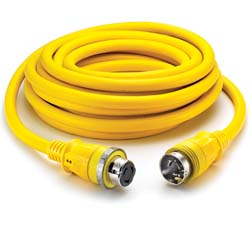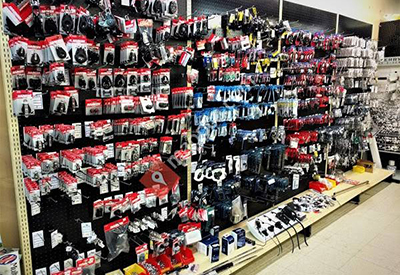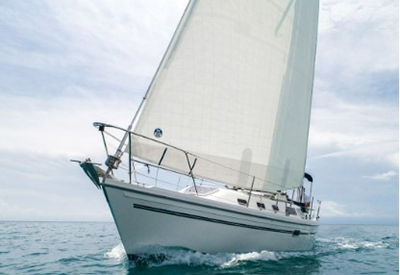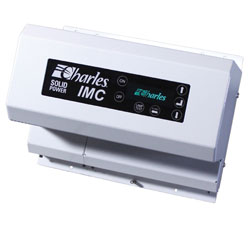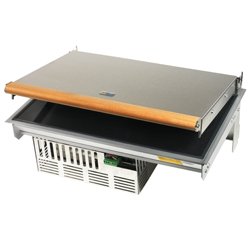Life onboard easier with a solar charging system
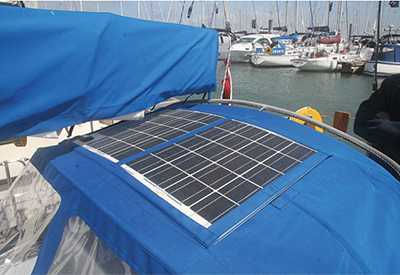
Apr 20, 2022
By Marc Robic
In a previous article, I detailed how we converted our ice box into a fridge/freezer onboard our Catalina 270. I can assure you, it is one of the best modifications we’ve made and truly classifies itself as an upgrade for both convenience and overall enjoyment.
This refrigeration upgrade works best when you can keep it on 24/7 all season instead of turning it on and off as you come and go in order to avoid dead batteries. Besides having to empty any perishables when leaving, the time it takes to reach the right temp when you return is a pain and would have defeated the purpose of this upgrade to begin with.
We also did not want to use the engine to recharge the batteries, or seek access to shore power, or use a noisy wind turbine or generator. Solar was the best choice! Since then, our batteries have never been depleted and, as a bonus, are maintained all winter long while remaining onboard. No more removing and reinstalling two heavy batteries in the fall and spring. Thanks to the solar system, the batteries are maintained via the controller and can not freeze.
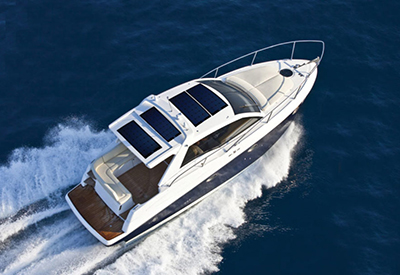 Determining and measuring our power (amp/hour) needs was pretty easy, as we are realistic in our usage. The occasional overnight at anchor where our anchor light would be on all night. Other cabin lights would be used maybe 2-4 hours per day and rarely all at once. It must also be noted that we changed all our bulbs to LED. Our new electric head does require power, but only when used! All electronics do use battery power but mostly only when sailing or motoring. So, our biggest power consumer is the fridge.
Determining and measuring our power (amp/hour) needs was pretty easy, as we are realistic in our usage. The occasional overnight at anchor where our anchor light would be on all night. Other cabin lights would be used maybe 2-4 hours per day and rarely all at once. It must also be noted that we changed all our bulbs to LED. Our new electric head does require power, but only when used! All electronics do use battery power but mostly only when sailing or motoring. So, our biggest power consumer is the fridge.
How much power?
 As described previously, our fridge conversion unit is a newer more compact, efficient and quieter unit manufacturer by Nova Kool in Coquitlam BC. The LT201 amazingly uses very little power.
As described previously, our fridge conversion unit is a newer more compact, efficient and quieter unit manufacturer by Nova Kool in Coquitlam BC. The LT201 amazingly uses very little power.
Having assessed our power needs, we determined we needed 2 x 100-watt solar panels and a 30-amp MPPT charge controller.
Another consideration I had was flexibility. We have a removable davit system made by Kingston Anchor for our Zodiac tender. I wanted the ability of using the same solidly mounted davit brackets for the solar panels with the ability of attaching the davits when needed by simple quick release hook-ups. I also use the same davit mount brackets to hold the mast during the winter, while leaving the solar panels exposed to do their thing all winter – a super versatile system.
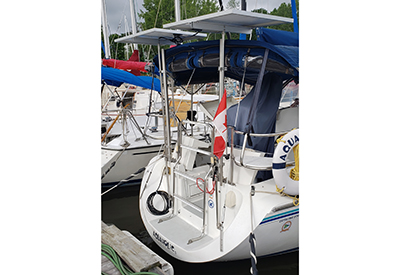 With this information on hand, my search for what I needed began. There are many different types of solar panels to choose from, making any such project easy to accomplish for any boat configuration or power needs. As technology continues to evolve, many panels are getting smaller & more powerful.
With this information on hand, my search for what I needed began. There are many different types of solar panels to choose from, making any such project easy to accomplish for any boat configuration or power needs. As technology continues to evolve, many panels are getting smaller & more powerful.
For boating, there are many choices and sizes. There are flexible & rigid panels. And there are Monocrystalline and Polycrystalline solar panels.
• Polycrystalline solar panels are cheaper than monocrystalline panels, however, they are less efficient
• Monocrystalline solar panels are highly efficient and have a sleek design, but come at a higher price point than other solar panels
For our installation and needs, I wanted to keep the overall cost under control. So, I chose 2 100-watt rigid Polycrystalline panels with a 30-amp MPPT solar charge controller to get the most efficient and effective charging potential.
Controllers
 The are many types of controllers on the market and prices can vary as well. But basically, there are two types for our boating (or RV) needs; PWM (Pulse Width Modulated) and MPPT (Maximum Power Point Tracking). Normally, MPPT are more expensive, but still very affordable and will really use the maximum power generated by your solar panels. Controllers will also protect your batteries from over charging, getting too hot and will increase, reduce and maintain the charge output as needed.
The are many types of controllers on the market and prices can vary as well. But basically, there are two types for our boating (or RV) needs; PWM (Pulse Width Modulated) and MPPT (Maximum Power Point Tracking). Normally, MPPT are more expensive, but still very affordable and will really use the maximum power generated by your solar panels. Controllers will also protect your batteries from over charging, getting too hot and will increase, reduce and maintain the charge output as needed.
Having a good controller is essential to maximize your system and ensure the batteries are properly maintained. I chose an MPPT controller as they maximize the charge output from the solar panels. Plus, we charge our electronics from the dual USB charge ports on the controller! A very practical bonus functionality.
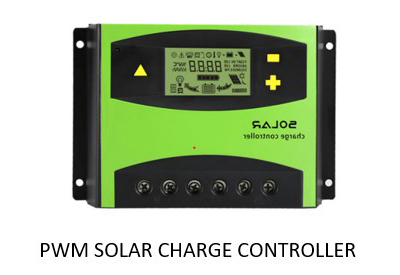 On board, we have a dual battery system with a main battery switch (OFF, Batt 1, Batt 2 and Both). Both batteries are exactly the same, which is also important in order to maintain best performance. Every season, I alternate which battery will be the House battery and which will be the (engine) Start Battery.
On board, we have a dual battery system with a main battery switch (OFF, Batt 1, Batt 2 and Both). Both batteries are exactly the same, which is also important in order to maintain best performance. Every season, I alternate which battery will be the House battery and which will be the (engine) Start Battery.
The solar charge controller is wired directly to the house battery. The fridge itself is wired to the Accessory output on the solar charge controller. Which provides an extra on/off switch plus I can visually monitor the power consumption when the fridge compressor kicks-on. BTW, during hot day time hours the fridge runs only about 4 minutes, 3 times per hour only and is super quiet.
If we’re going to be away 5 or more days and during the winter, I turn the battery switch to BOTH which will then flow the solar charge to both batteries. When I get back, both batteries are fully and equally charged. While onboard, we then switch back to the Start or House battery as needed.
Besides my time, the total cost for our solar charging system was less then $600. A bargain when considering the cost of replacing batteries and not having the headache and trouble associated to a simple ice box! Plus, never worry if the engine will start or not!
As solar systems are evolving and the price of gas will further encourage development of electric propulsion for all boats, hopefully solar system will follow suit to enable greater range between charges as well as the ability to charge the batteries while underway!
 Marc Robic is a member of the Canadian Power & Sail Squadron. He and his wife, Claude Couture sail their Catalina 270, Aquaholic 3, out of the Ile-Perrot Yacht Club in Montreal, where Marc spent 16 years as Harbour Master. They are regular Caribbean bareboat yacht charterers. With over 40-years experience, Marc is also an avid onboard do-it-yourselfer.
Marc Robic is a member of the Canadian Power & Sail Squadron. He and his wife, Claude Couture sail their Catalina 270, Aquaholic 3, out of the Ile-Perrot Yacht Club in Montreal, where Marc spent 16 years as Harbour Master. They are regular Caribbean bareboat yacht charterers. With over 40-years experience, Marc is also an avid onboard do-it-yourselfer.

